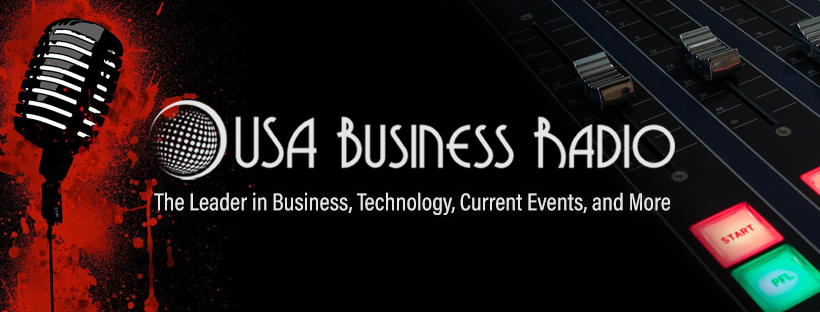
Inflation Sees Significant Drop – What’s Behind It?
INTERVIEW ON THE PRICE OF BUSINESS SHOW, MEDIA PARTNER OF THIS SITE.
Recently Kevin Price, Host of the nationally syndicated Price of Business Show, interviewed Alex Brill.
U.S. consumer prices experienced a modest increase in June, marking the smallest annual rise in over two years. This slowdown in inflation, although not significant enough to deter the Federal Reserve from raising interest rates, provided relief to investors and triggered a rally in stock and bond markets. The easing of inflationary pressures was attributed to the end of pandemic-related price surges caused by supply shortages and changes in purchasing behavior. According to Christopher Rupkey, the chief economist at FWDBONDS, the Federal Reserve now has the upper hand in its battle against inflation.
In June, the Consumer Price Index (CPI) rose by 0.2% following a 0.1% increase in May. The increase was primarily driven by higher rents, which accounted for 70% of the rise in the CPI. Additionally, there were slight increases in motor vehicle insurance and gasoline prices, offsetting the decline in used car and truck prices. Food prices saw a minimal increase of 0.1%, with stable grocery food prices and declines in egg costs and meat and fish prices compensating for a rise in fruit and vegetable prices.
On an annual basis, the CPI rose by 3.0% in the 12 months leading up to June. This was the smallest year-on-year increase since March 2021, following a 4.0% rise in May. The year-on-year CPI rate has slowed down partly due to the exclusion of last year’s significant price hikes from the calculations.
The moderation of inflationary pressures has resulted in increased purchasing power for consumers. Real weekly earnings for private workers rebounded by 0.5% and were up 0.6% compared to the previous year. President Joe Biden viewed the inflation and wage data as evidence of the effectiveness of his economic policy, known as “Bidenomics,” and vowed to continue striving for lower costs for families.
However, inflation still remains above the Federal Reserve’s 2% target, and the labor market remains tight. Although employment gains were the smallest in two and a half years in June, the unemployment rate reached historically low levels and wage growth remained strong. Despite these factors, the retreat in inflation provided cautious optimism that the economy might avoid a much-feared recession.
The cooling inflationary environment also strengthened the case against further interest rate hikes. The Federal Reserve had signaled two rate hikes for this year, including one expected in the current month. However, there is growing evidence to suggest that the Federal Reserve will adopt a “watch and wait” approach after the anticipated rate hike.
Financial markets have already priced in a 25 basis points interest rate increase at the Federal Reserve’s upcoming policy meeting in July. The central bank had refrained from raising rates in June after already increasing the policy rate by 500 basis points since March 2022.
Underlying prices, as measured by the core Consumer Price Index excluding food and energy, increased by 0.2% in June. This was the smallest gain since August 2021 and marked the first time in six months that the core CPI did not post monthly gains of at least 0.4%. Shelter costs, particularly owners’ equivalent rent (OER), saw a 0.4% increase, while hotel and motel room prices dropped by 2.3%.
Looking ahead, core inflation is expected to continue receding due to a cooling labor market and indications of declining rents. The Institute for Supply Management’s measure of prices paid by services businesses for inputs dropped in June to its lowest level since March 2020, which is seen as a good predictor of personal consumption expenditures (PCE) inflation. This decline in prices paid by services businesses is being closely monitored by the Federal Reserve as an indicator of progress in the fight against inflation.
Overall, the latest data shows a moderation in inflation, offering hope for a more stable economic outlook. However, the Federal Reserve will closely monitor future data and adjust its monetary policy accordingly.
According to the American Enterprise Institute, “Alex Brill is a resident fellow at the American Enterprise Institute (AEI), where he studies the impact of tax policy on the US economy as well as the fiscal, economic, and political consequences of tax, budget, health care, retirement security, and trade policies. He is the editor of Carbon Tax Policy: A Conservative Dialogue on Pro-Growth Opportunities. Before joining AEI, Brill served as the policy director and chief economist of the House Ways and Means Committee. Previously, he served on the staff of the White House Council of Economic Advisers. He has served on the staff of the President’s Fiscal Commission (Simpson-Bowles) and the Republican Platform Committee (2008). He is also the founder and CEO of the economic consulting firm Matrix Global Advisors (MGA). Brill has an MA in mathematical finance from Boston University and a BA in economics from Tufts University.”
For more great national news, click here.
LISTEN TO THE INTERVIEW IN ITS ENTIRETY HERE







